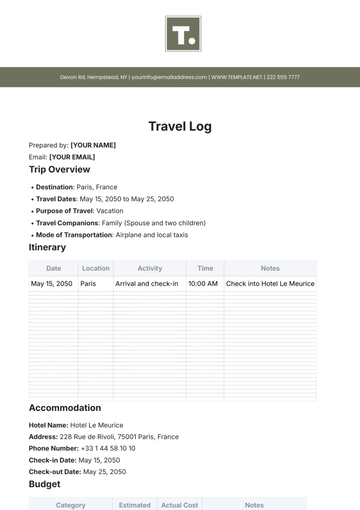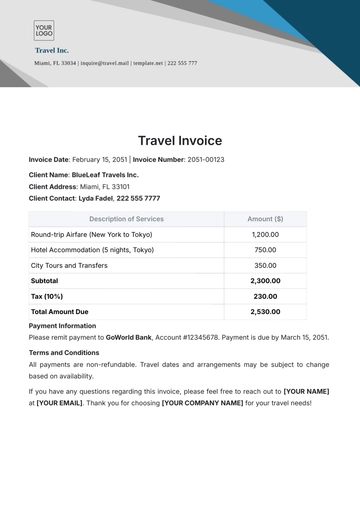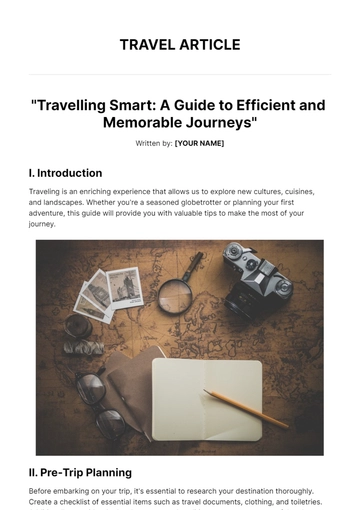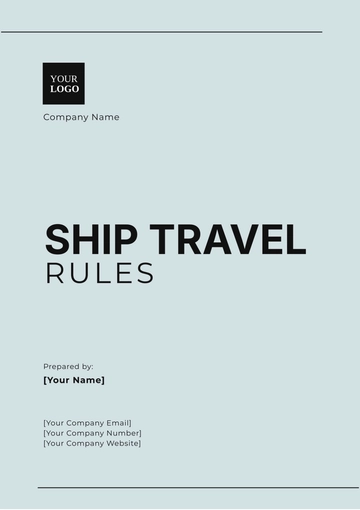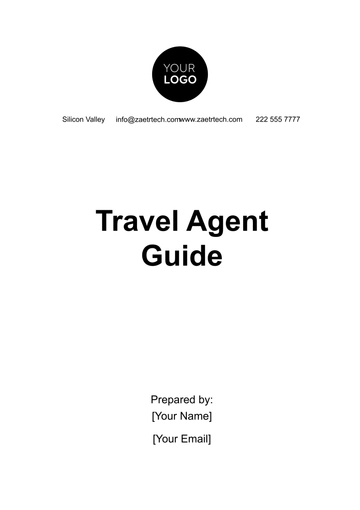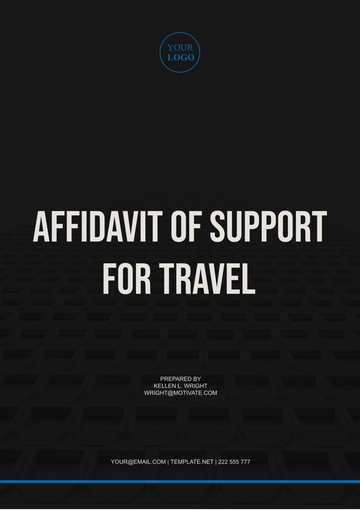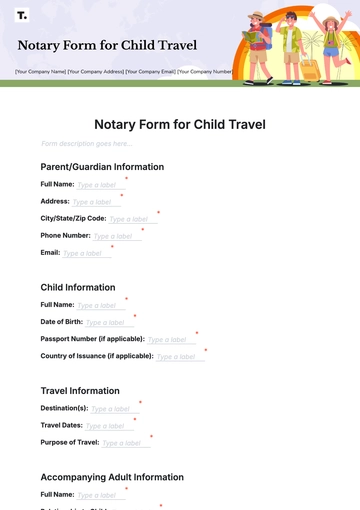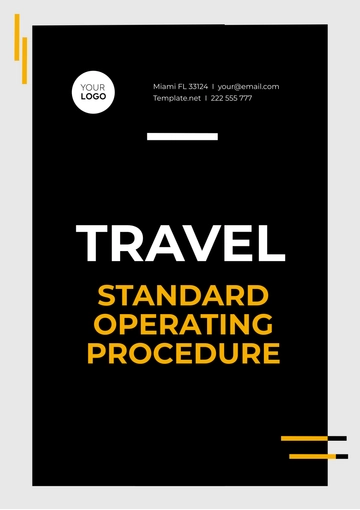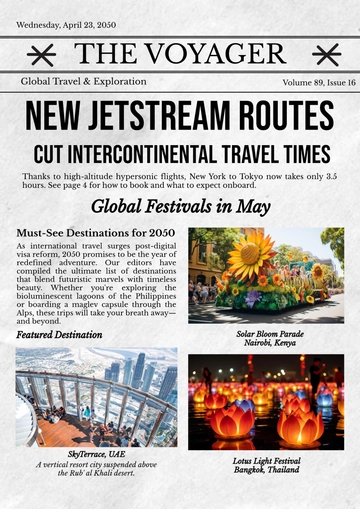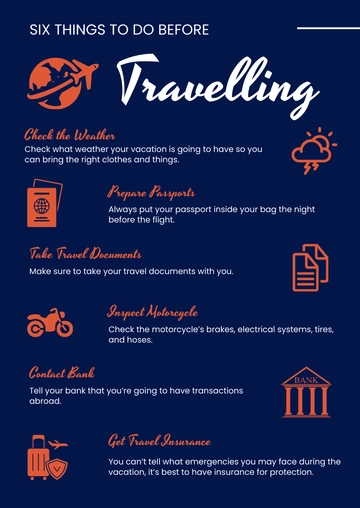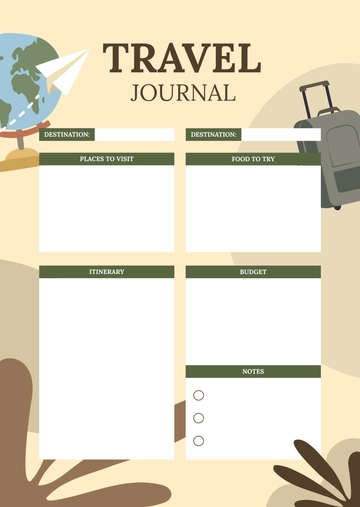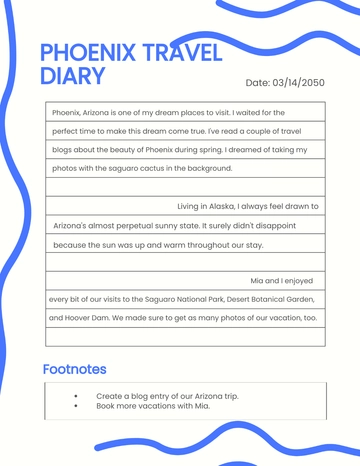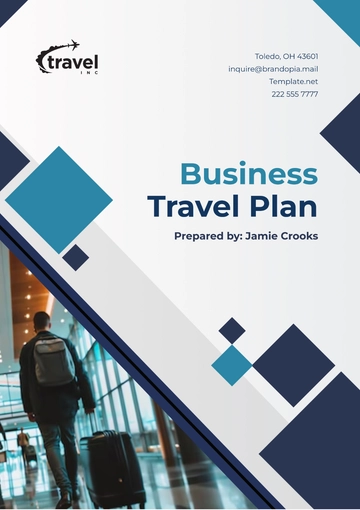Free Car Rental Accident Prevention Guide
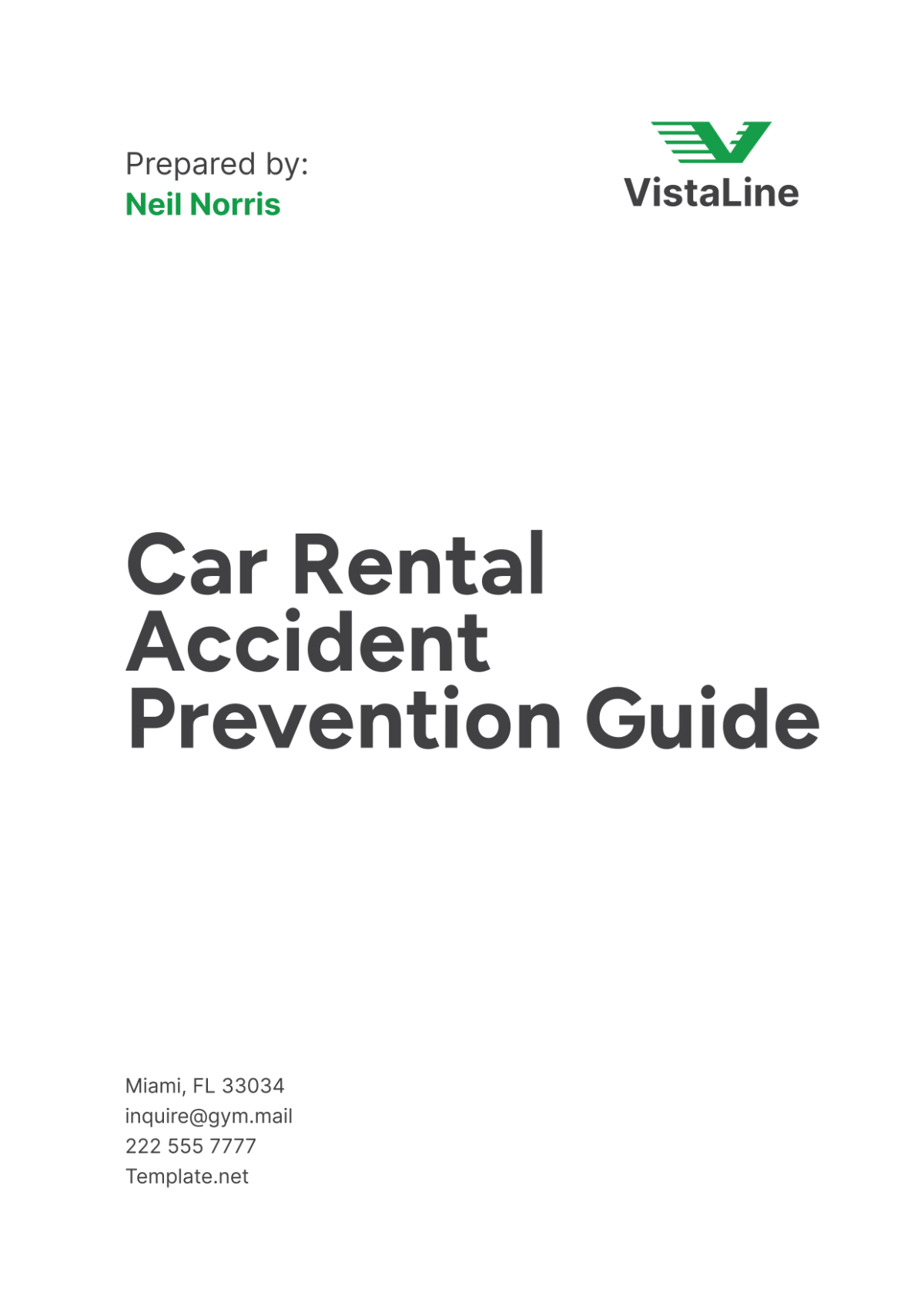
I. Introduction
A. Purpose of the Guide
The purpose of this Car Rental Accident Prevention Guide is to provide comprehensive information and practical tips to help renters minimize the risk of accidents while driving rental vehicles. By following the guidelines outlined in this document, renters can ensure their safety, the safety of their passengers, and the protection of the rental vehicle. It also serves to educate renters about their responsibilities and best practices to maintain a good rental experience with [Your Company Name].
B. Importance of Accident Prevention
Accident prevention is crucial not only for the safety of individuals but also for the reduction of financial and legal liabilities. Preventing accidents helps avoid injury, property damage, and the associated costs, such as medical bills and repair expenses. Furthermore, a good driving record can enhance the renter's reputation and trustworthiness with rental companies like [Your Company Name]. By emphasizing accident prevention, renters can enjoy their travels with peace of mind, knowing they are taking proactive steps to ensure safety on the road.
II. Pre-Rental Checks
A. Vehicle Inspection
1. Exterior Inspection
Before taking possession of a rental vehicle, conduct a thorough exterior inspection. Check for any dents, scratches, or other damages on the body of the car. Pay close attention to the following areas:
Bumpers and Fenders: Inspect for any signs of previous impacts or damage that might affect the vehicle's structural integrity.
Windows and Mirrors: Ensure there are no cracks or chips that could compromise visibility, especially in adverse weather conditions.
Lights: Verify that all headlights, taillights, and indicators are functioning properly to ensure optimal visibility on the road.
2. Interior Inspection
Inspect the interior of the vehicle to ensure it meets your expectations for cleanliness and functionality:
Dashboard: Check that all warning lights turn off after starting the vehicle, indicating no immediate issues with the engine or electronics.
Seats and Belts: Ensure all seats are comfortable and belts are in good condition, as proper seating and secure belting are critical for safety.
Controls: Test the air conditioning, heating, and infotainment systems to ensure they are operational and provide a comfortable driving experience.
B. Documentation
1. Valid Driver’s License
To rent a vehicle, you must possess a valid driver’s license appropriate for the vehicle class you intend to drive. This ensures that you meet legal requirements and have the necessary skills to operate the vehicle safely.
2. Rental Agreement
Carefully review the rental agreement before signing to understand the terms and conditions of the rental. Key details to consider include:
Mileage Limits: Understand the mileage restrictions and potential charges for exceeding them to avoid unexpected fees.
Fuel Policies: Know the fuel requirements, such as returning the vehicle with a full tank or paying for fuel upfront.
Damage Policy: Familiarize yourself with the rental company's policies regarding damage to the vehicle, including your responsibilities and liabilities.
C. Insurance
1. Types of Coverage
Understanding the types of insurance coverage available for rental vehicles can help you make informed decisions:
Collision Damage Waiver (CDW): This optional coverage relieves you of financial responsibility if the rental car is damaged or stolen. It typically excludes certain damages, so read the policy details carefully.
Personal Accident Insurance (PAI): Provides coverage for medical expenses resulting from an accident, including ambulance fees, hospitalization, and medical treatment.
Personal Effects Coverage (PEC): Protects personal belongings inside the rental vehicle from theft or damage.
2. Insurance Verification
Before renting a vehicle, verify your existing auto insurance policy and credit card benefits. Some policies extend coverage to rental cars, potentially reducing the need for additional insurance. However, confirm the specifics with your insurance provider to ensure adequate coverage during the rental period.
III. Safe Driving Practices
A. Defensive Driving
1. Maintaining Safe Distance
Maintaining a safe following distance is critical to prevent rear-end collisions and allow sufficient time to react to sudden changes in traffic conditions. The general rule is to maintain at least a three-second gap between your vehicle and the one in front of you under normal driving conditions. Increase this distance during adverse weather or when driving at higher speeds.
2. Adhering to Speed Limits
Speed limits are established to ensure safe driving conditions for all road users. Exceeding speed limits not only increases the risk of accidents but also reduces your ability to react to hazards. Adjust your speed according to road conditions, visibility, and traffic flow to maintain control of the vehicle at all times.
B. Avoiding Distractions
1. Mobile Device Usage
The use of mobile devices while driving is a significant cause of accidents. To minimize distractions, use hands-free technology for calls and navigation. If you need to make adjustments to your device, pull over to a safe location where you can safely operate it without compromising your focus on the road.
2. Eating and Drinking
Eating, drinking, or manipulating items inside the vehicle can divert your attention from driving. Avoid these activities while the vehicle is in motion. If necessary, take breaks at designated rest areas or parking lots to consume food and beverages safely.
C. Understanding Traffic Signs and Signals
1. Common Traffic Signs
Traffic signs convey essential information and instructions to drivers. Familiarize yourself with common signs such as:
Stop Sign: Requires drivers to come to a complete stop and yield to other traffic or pedestrians.
Yield Sign: Instructs drivers to slow down and yield the right-of-way to vehicles approaching from another direction.
Speed Limit Sign: Indicates the maximum legal speed for a specific road or area, ensuring safe and lawful driving practices.
2. Traffic Signals
Traffic signals regulate the flow of traffic at intersections and pedestrian crossings. Obey signals such as:
Red Light: Requires drivers to stop behind the stop line or crosswalk until the light turns green.
Yellow Light: Warns drivers that the light is about to turn red, signaling them to prepare to stop or proceed with caution.
Green Light: Permits drivers to proceed, ensuring they yield to pedestrians and other vehicles when necessary.
IV. Environmental Considerations
A. Weather Conditions
1. Driving in Rain
Driving in rainy conditions requires heightened caution due to reduced visibility and road traction. Adjust your driving behavior by:
Reducing Speed: Slow down to maintain control and prevent hydroplaning on wet surfaces.
Increasing Following Distance: Allow for greater stopping distances to react to sudden stops by vehicles ahead.
Using Headlights: Turn on headlights to improve visibility, even during daylight hours when visibility is reduced by rain.
2. Driving in Snow
Driving in snow or icy conditions poses unique challenges that require specific precautions:
Snow Tires or Chains: Use snow tires or tire chains if recommended or required by local regulations to improve traction on slippery surfaces.
Gentle Maneuvers: Accelerate and decelerate gradually to avoid skidding, which can result from abrupt movements on snow-covered roads.
Maintaining Distance: Increase your following distance to allow for greater stopping distances and reaction time in case of sudden stops or loss of control.
B. Night Driving
1. Proper Lighting
Ensure all vehicle lights are in working order before driving at night. Proper lighting includes headlights, taillights, brake lights, and turn signals to enhance visibility for yourself and other drivers on the road.
2. Increased Vigilance
Nighttime driving requires heightened awareness due to reduced visibility and potential hazards:
Scan for Hazards: Continuously scan the road ahead and check mirrors for approaching vehicles or pedestrians.
Watch for Wildlife: Be cautious of wildlife crossing roads, especially in rural or wooded areas where animals may be more active at night.
Minimize Glare: Adjust interior lighting and dashboard settings to minimize glare and maintain clear visibility of the road ahead.
C. Road Conditions
1. Construction Zones
Construction zones present temporary changes to road conditions that require careful navigation:
Obey Signs and Workers: Follow posted speed limits and directional signs to safely navigate through construction areas.
Be Aware of Equipment: Watch for construction vehicles entering or exiting work zones and yield the right-of-way as required.
2. Rural Roads
Driving on rural roads presents challenges such as narrow lanes, sharp curves, and limited visibility:
Reduce Speed: Slow down when approaching sharp curves or blind corners where visibility is limited.
Use Caution at Intersections: Approach intersections with caution and yield to cross traffic, as rural intersections may have limited traffic control devices.
Watch for Farm Vehicles: Be mindful of slow-moving farm equipment or vehicles sharing rural roads, especially during planting or harvesting seasons.
V. Vehicle Maintenance and Emergency Preparedness
A. Routine Maintenance
1. Tire Pressure
Maintaining proper tire pressure is essential for vehicle safety and performance:
Check Pressure Regularly: Monitor tire pressure using a gauge and inflate tires to the manufacturer's recommended levels.
Inspect Tread Depth: Ensure tires have adequate tread depth to maintain traction on wet or slippery surfaces.
Rotate Tires: Rotate tires according to manufacturer recommendations to promote even wear and extend tire life.
2. Fluid Levels
Monitor fluid levels to keep essential systems operating efficiently:
Check Engine Oil: Regularly check engine oil levels and change oil according to the manufacturer's recommended intervals.
Inspect Coolant: Ensure coolant levels are adequate to prevent engine overheating, especially during hot weather or extended driving periods.
Top Off Fluids: Maintain proper levels of brake fluid and windshield washer fluid to ensure optimal performance of braking and visibility systems.
B. Emergency Kit
1. Essential Items
Prepare an emergency kit with essential items to handle unexpected situations:
Flashlight with Extra Batteries: Provide illumination for nighttime emergencies or repairs.
Jumper Cables: Assist in jump-starting a vehicle with a dead battery.
Basic Tools: Include tools such as screwdrivers, pliers, and wrenches for minor repairs or adjustments.
Road Flares or Reflective Triangles: Warn other drivers of your presence during roadside emergencies or breakdowns.
Blanket: Provide warmth in cold weather or comfort during extended waiting periods.
First Aid Kit: Include bandages, antiseptic wipes, adhesive tape, scissors, and medications to address minor injuries or medical emergencies.
2. First Aid Kit
A well-stocked first aid kit is essential for providing immediate medical assistance in case of injuries:
Bandages and Dressings: Cover wounds and cuts to prevent infection and promote healing.
Antiseptic Wipes: Cleanse wounds and prevent the spread of bacteria or contaminants.
Adhesive Tape and Scissors: Secure bandages and dressings in place to protect injuries from further damage.
Medications: Include over-the-counter pain relievers, allergy medications, and any prescription medications needed by travelers.
C. Breakdown Procedures
1. Contacting Roadside Assistance
In the event of a breakdown or mechanical failure, contact roadside assistance immediately:
Use Emergency Contacts: Store the rental company's roadside assistance number in your phone contacts for quick access.
Provide Details: Provide your location, vehicle description, and a brief description of the issue to expedite assistance.
Follow Instructions: Follow instructions from roadside assistance personnel regarding safety precautions or temporary repairs until help arrives.
2. Safety Precautions
While awaiting roadside assistance, prioritize safety to minimize risks to yourself and other road users:
Activate Hazard Lights: Alert other drivers to your vehicle's presence and notify them of potential hazards ahead.
Move to Safe Location: If possible, move the vehicle to a safe location such as a breakdown lane or roadside shoulder away from traffic flow.
Stay Inside the Vehicle: Remain inside the vehicle with seat belts fastened to protect yourself from oncoming traffic or inclement weather conditions.
VI. Post-Rental Procedures
A. Returning the Vehicle
1. Inspection Upon Return
Before returning the rental vehicle, conduct a final inspection to identify any new damages or issues that may have occurred during your rental period:
Exterior Inspection: Walk around the vehicle to check for dents, scratches, or other damages that were not present at the time of rental.
Interior Inspection: Ensure the interior of the vehicle remains clean and free of debris or personal belongings.
Documentation: Take photos or videos of any new damages and note them in the rental agreement or inspection report provided by the rental company.
2. Reporting Issues
Promptly report any damages or issues to [Your Company Name] staff upon returning the vehicle:
Provide Details: Describe the nature and extent of damages, including the location on the vehicle and any contributing factors.
Submit Documentation: Submit photos, videos, or witness statements to support your report and facilitate the resolution process.
Review Charges: Review any potential charges associated with damages to ensure they are accurately documented and resolved before departing from the rental location.
B. Accident Reporting
1. Immediate Actions
In the unfortunate event of an accident involving the rental vehicle, prioritize safety and take immediate actions to protect yourself and others:
Ensure Safety: Move the vehicle to a safe location away from traffic if possible to prevent further collisions or injuries.
Check for Injuries: Assess the condition of all passengers and pedestrians involved in the accident and provide or seek medical assistance as needed.
Exchange Information: Exchange contact and insurance information with other parties involved in the accident, including witnesses, to facilitate insurance claims and accident reports.
2. Documentation
Document the details of the accident thoroughly to support insurance claims and legal proceedings:
Take Photos: Capture multiple angles of the accident scene, vehicle damages, and surrounding conditions to provide visual evidence.
Complete Accident Report: Fill out an accident report form provided by [Your Company Name] or local authorities to record essential details such as time, date, location, and parties involved.
Notify Rental Company: Inform [Your Company Name] staff of the accident promptly to initiate the claims process and discuss next steps for vehicle replacement or repair.
VII. Conclusion
A. Summary of Key Points
This comprehensive guide has covered essential aspects of accident prevention, including pre-rental checks, safe driving practices, environmental considerations, vehicle maintenance, and emergency preparedness. By following these guidelines, renters can significantly reduce the risk of accidents and ensure a safe rental experience with [Your Company Name].
B. Final Tips for Safe Driving
In conclusion, prioritize safety and responsibility while operating a rental vehicle to protect yourself, passengers, and the rental car. Remember these final tips for safe driving:
Stay Alert: Remain focused and attentive to changing road conditions and potential hazards.
Plan Ahead: Familiarize yourself with the route and destination before driving to minimize distractions and stress.
Take Breaks: Schedule regular breaks during long drives to rest and refresh your concentration.
Obey Laws: Adhere to local traffic laws and regulations to maintain safety and avoid penalties or fines.
For further information or assistance, contact [Your Company Name] at [Your Company Number] or visit [Your Company Website] to learn more about our rental services and safety protocols.
- 100% Customizable, free editor
- Access 1 Million+ Templates, photo’s & graphics
- Download or share as a template
- Click and replace photos, graphics, text, backgrounds
- Resize, crop, AI write & more
- Access advanced editor
Promote safety with the Car Rental Accident Prevention Guide Template on Template.net. This editable tool helps establish preventive measures. Utilize our Ai Editor Tool to customize guides, fostering a safe environment and reducing accident risks in your car rental business.

